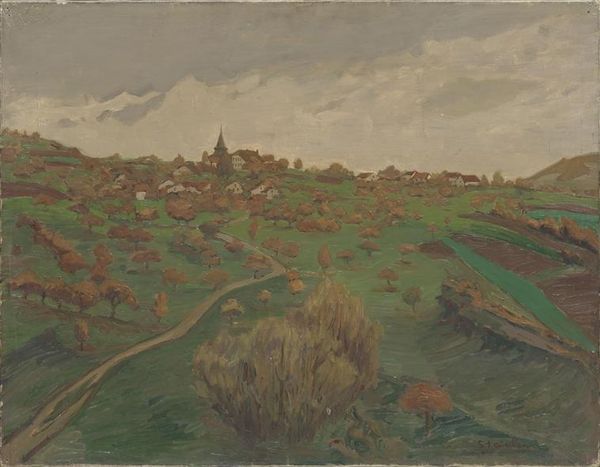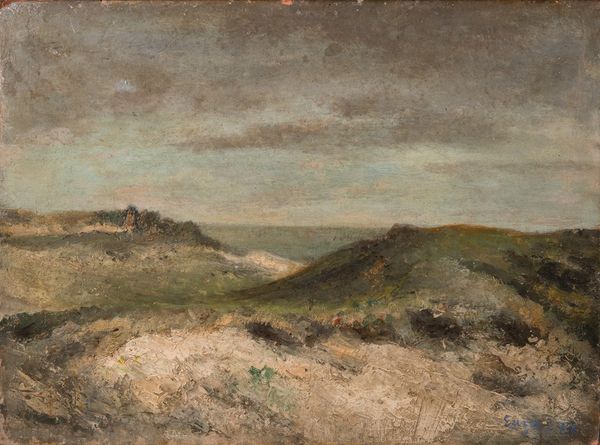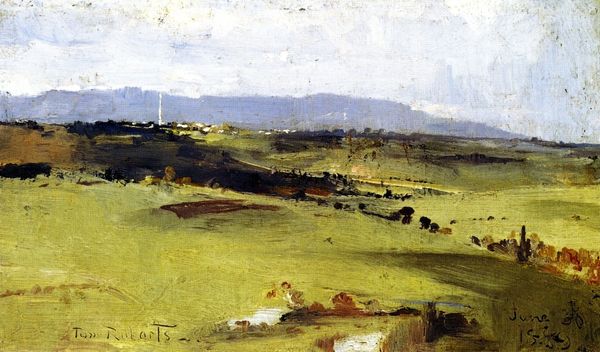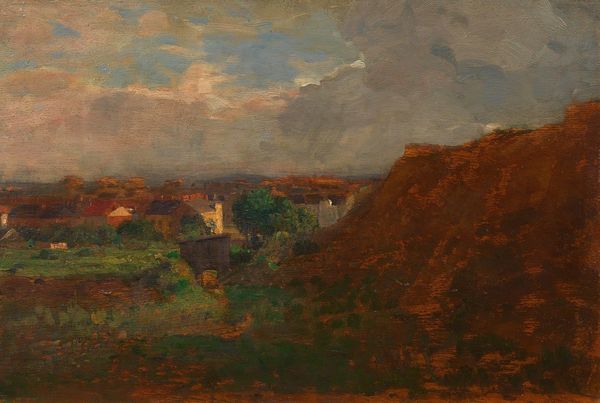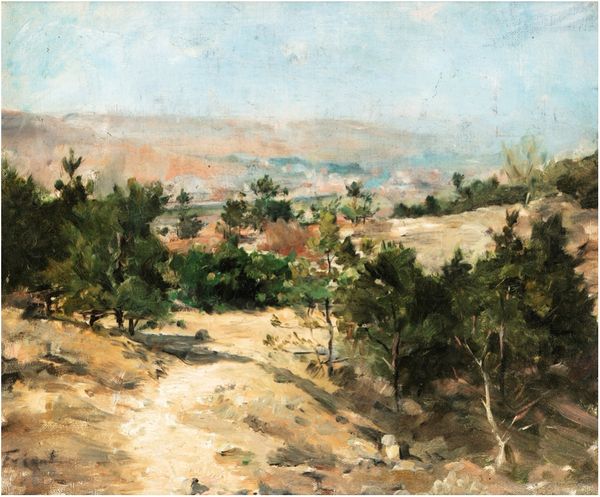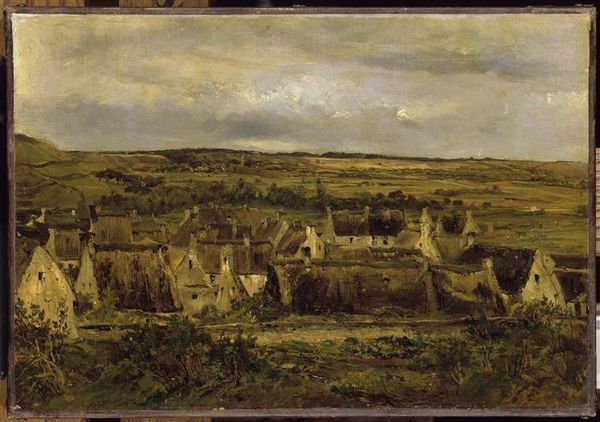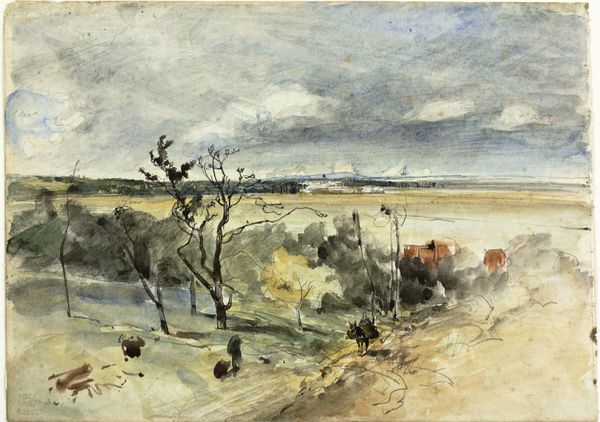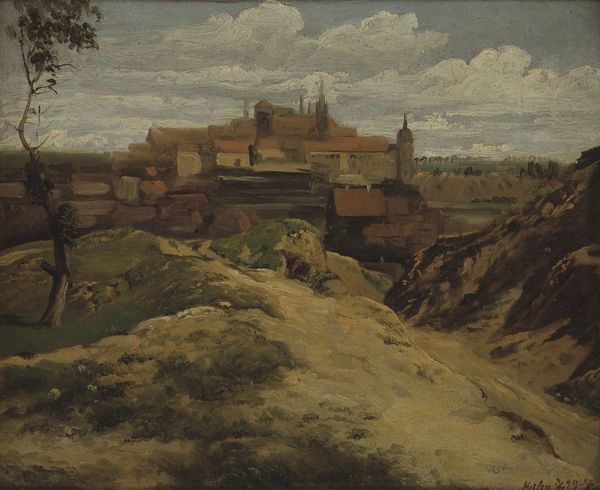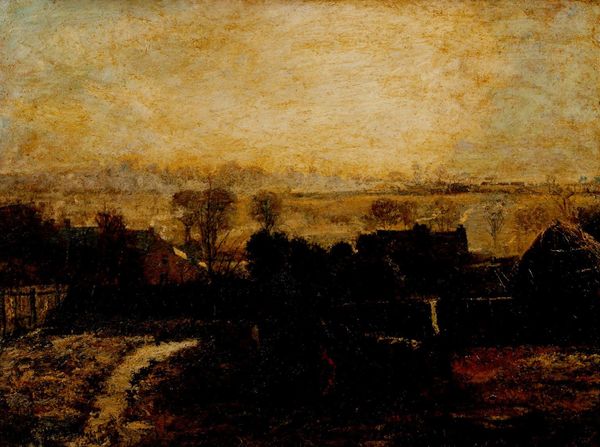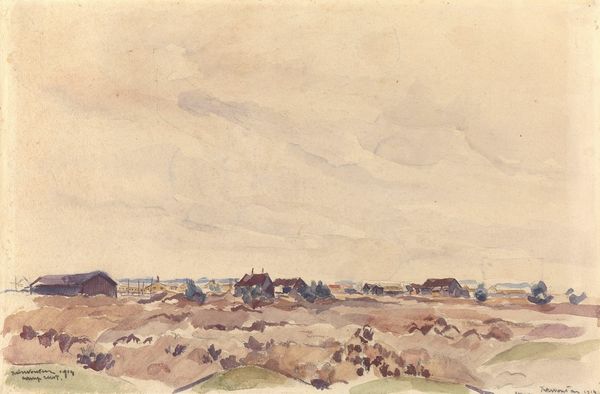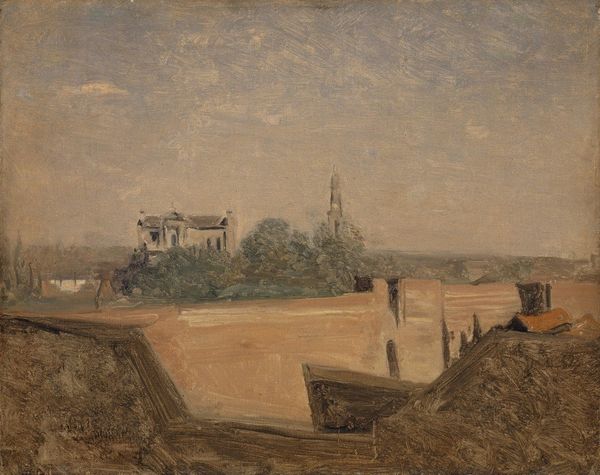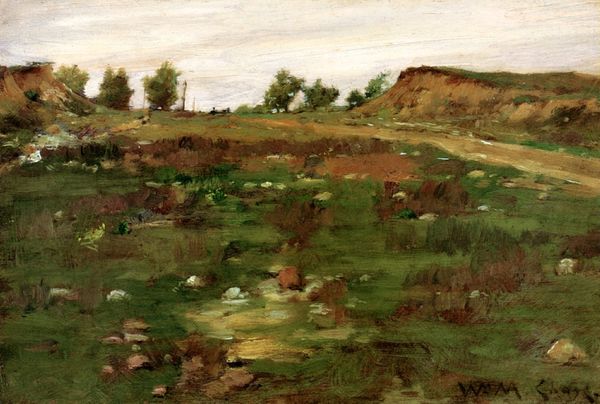
Dimensions: 359 mm (height) x 537 mm (width) (bladmaal)
Editor: Here we have Ker Xavier Roussel’s “Landskab ved Cuiseaux” from 1906, held at the SMK. It’s an intriguing landscape in pastel that evokes a sense of both tranquility and slight unease. What strikes you most about it? Curator: I see a subtle commentary on the industrial encroachment upon the natural world, and perhaps even class conflict, expressed through the lens of intimate Romanticism. Roussel, though associated with the intimist movement, operated within a rapidly changing social and political landscape. The seemingly serene depiction of Cuiseaux hints at tensions simmering beneath the surface of rural life. Editor: Tensions? Where do you see those tensions arising? Curator: Consider the viewpoint. We are positioned as outsiders, looking down on the town. The foreground is almost aggressively textured, obscuring our view, denying easy access to the idyllic scene beyond. The way he applies frottage can even be seen as creating a texture which hints at something darker or rougher. Could that roughness stand for the exploitation of the rural workforce, rendered invisible, even abstract, beneath a veneer of bourgeois comfort? Also, notice the looming structures—factory chimneys?—that pierce the horizon. How do those relate to rural life in Cuiseaux? Editor: I didn’t think about it that way. It's true that I was caught up in the pleasing aesthetic. The artist captured that light in an almost Impressionistic style. Curator: And, let’s not ignore the social dynamics that Impressionism represents: A largely white, male gaze that often sidelined working-class voices. Here, the techniques are employed to maybe make the viewer consider that those who are often forgotten are being seen here as relevant to a world quickly shifting between Romantic ideas of beauty and a more urgent Modernity. Editor: I see. It makes you think about the unseen realities behind even the most picturesque scenes. Curator: Precisely! It asks us to consider not just what we see, but whose perspective is prioritized, and what stories remain untold.
Comments
No comments
Be the first to comment and join the conversation on the ultimate creative platform.
